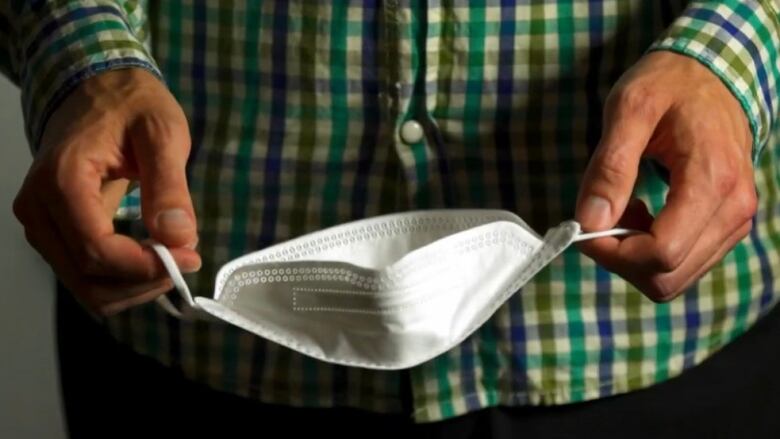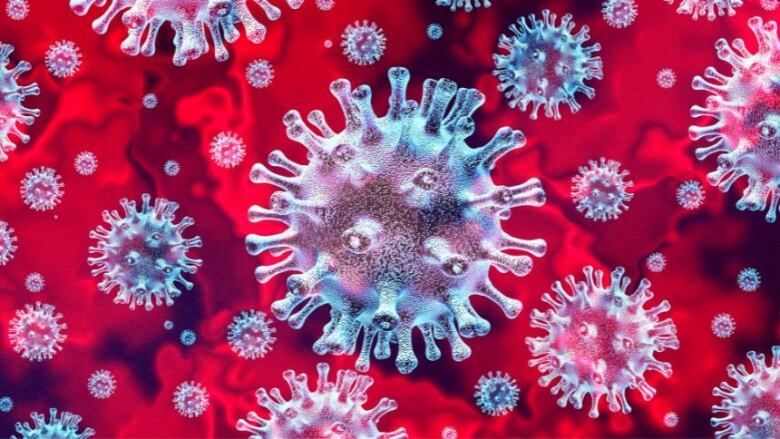Epidemiologist urges return to masking as emerging subvariants evade immunity
Dr. Chris Labos says wearing a mask is a simple and effective way to prevent spread

An epidemiologist is urging people to start masking again to help offset the spread of COVID-19, as emerging Omicron subvariantshave mutated to better evade immunity from vaccination and infection than previous strains.
The highly transmissible Omicron subvariantBA.5 remains most common in New Brunswick and across the country.
ButDr. Chris Labos, who is also a cardiologist in Montreal, says other subvariants that are emerging,such asBA.2.75.2 and BQ.1.1,could become the dominant strain, with the potential to drive new waves of COVID.
"The question becomes, well, if these are different enough from BA5, does that mean people will get reinfected? Does that mean people might get infectedmultiple times?How much protection do we have from prior infections?
"And that is still a little bit unknown," said Labos.

A single case of BA.2.75.2 was detected in New Brunswick in September, theDepartment of Health confirmed earlier this week, although it was not announced or listed separately in any of the weekly COVIDWatch reports since then.
It was included within the BA.2percentages of samples, spokesperson Adam Bowie said in an emailed statement.
The COVIDWatch report provides a breakdown of the five "majorbranches of the Omicron variant (i.e. BA.1, BA.2, BA.3, BA.4, and BA.5), each of which may have sub-variants contained within," he said.
Of the 192 most recent random samples sent for sequencing, 93 per cent were BA.5, and seven per cent were BA.4.
Fall booster shots most important
Labossaid the best thing people can do to protect themselves isget a COVID-19 booster shotthis fall.
"While the vaccines may not be 100 per cent effective, they are very, very effective."
Two Omicron-specific boosters are now available in New Brunswick.
Pfizer's bivalent, which targets the original coronavirus, as well as Omicron subvariantsBA.4 and BA.5,is being offered to peopleaged 12 and older, providedfive months have passed since their last dose or infection, the Department of Health announced Friday.
Moderna's bivalent, whichtargets the original virus and Omicron variant BA.1,has been available to people18 and older since Oct. 11, providedfive months have passed since their last dose or infection.Children aged 12 to 17 who are at higher risk of severe outcomes from COVID-19 arealso eligible.

Masking is also important, said Labos.
"If we start to see more and more cases going up, I would strongly, strongly, strongly urge people to wear masks if you're going to be in an indoor public setting breathing the same air with a bunch of other humans for an extended period of time," he said.
"In terms of all the things that we could do in terms of preventing COVID you know, isolation periods, making sure people have paid sick leave, updating the ventilation status of buildings to make sure that there's good air quality indoors all of those things are important, but they are expensive and they are hard to do."
Wearing a mask is a low-cost, simple intervention that requires little effort, he said, comparing it to wearing gloves. Yet it "makes a huge difference," he said.
"I think that's going to be the key for public health messaging now, it's to sort of re-emphasize something that has been true all along, but that got a little bit lost in the messaging and in some of the perhaps unwarranted optimism that some people felt over the course of the summer."
With files from Information Morning Fredericton












_(720p).jpg)


 OFFICIAL HD MUSIC VIDEO.jpg)
.jpg)



























































































